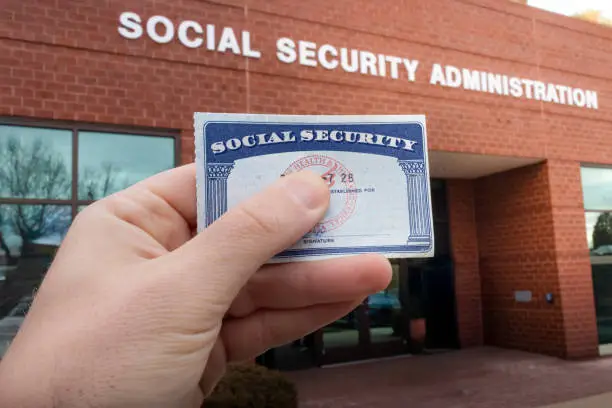Navigating the world of private health insurance in the USA can feel like trying to find a needle in a haystack—confusing, overwhelming, and often expensive. But what if I told you that getting private health insurance without emptying your wallet is totally doable? Whether you’re self-employed, between jobs, or just want to explore your options, this guide will walk you through everything you need to know to score affordable private health coverage.
Understanding Private Health Insurance in the USA
What is Private Health Insurance?
Private health insurance is coverage purchased directly by individuals or through employers, unlike government programs like Medicare or Medicaid. It helps cover your medical expenses—doctor visits, prescriptions, hospital stays, and more.
Why Choose Private Health Insurance?
Many Americans choose private health insurance because it offers more flexibility and wider provider networks than some public options. Plus, you get to pick plans that suit your unique health needs.
Common Challenges in Affording Health Insurance
Rising Premiums and Deductibles
One of the biggest headaches? The price. Premiums—the monthly fees you pay—have been steadily climbing, along with deductibles, which is the amount you pay out-of-pocket before insurance kicks in.
Understanding Coverage Limitations
Sometimes, even expensive plans don’t cover everything. It’s crucial to understand what’s included to avoid surprise bills later.
Tips to Find Affordable Private Health Insurance
Assess Your Health Needs First
Before diving into quotes, ask yourself: How often do I visit the doctor? Do I take regular medications? Do I need specialist care? Knowing this helps you avoid overpaying for coverage you don’t need.
Compare Plans and Providers
Don’t settle on the first plan you see. Spend time comparing options from different providers.
Use Online Marketplaces and Comparison Tools
Sites like Healthcare.gov or private tools such as Policygenius make comparing plans easier and faster.
Check for Discounts and Subsidies
You might qualify for government subsidies or discounts through certain organizations or professional groups.
Consider High Deductible Health Plans (HDHPs)
HDHPs often have lower premiums but higher out-of-pocket costs, ideal for healthy individuals who don’t expect frequent medical visits.
Look Into Health Savings Accounts (HSAs)
Pairing an HDHP with an HSA lets you save tax-free money to cover medical expenses—think of it as a health-focused savings account that reduces your overall costs.
Exploring Alternative Insurance Options
Short-Term Health Insurance Plans
These plans can provide temporary coverage during gaps but usually have limited benefits and don’t cover pre-existing conditions.
Catastrophic Health Insurance
Designed for emergencies only, catastrophic plans offer low premiums but high deductibles and are suitable if you’re young and healthy.
Government Assistance Programs to Help You Save
Medicaid and CHIP
If your income is low, you might qualify for Medicaid or the Children’s Health Insurance Program (CHIP), which provide free or low-cost coverage.
Affordable Care Act (ACA) Subsidies
Under the ACA, many people qualify for subsidies that reduce premiums significantly—check eligibility annually.
How to Avoid Common Pitfalls When Buying Insurance
Reading the Fine Print Carefully
Insurance contracts are full of jargon and exceptions—don’t skip the fine print. Look out for coverage limits and exclusions.
Avoiding Gaps in Coverage
Even short gaps can lead to penalties or denial of coverage later. Plan your coverage carefully to stay insured continuously.
Using Professional Help: Insurance Brokers and Agents
Benefits of Using a Broker
Brokers can help you navigate the options and find plans tailored to your budget and health needs.
How to Find a Reputable Broker
Look for licensed professionals with good reviews and transparent fees.
Tips for Managing Health Expenses Beyond Insurance
Negotiating Medical Bills
Did you know many providers will negotiate bills if asked? Don’t hesitate to request discounts or payment plans.
Using Telemedicine and Preventive Care
Telemedicine visits are often cheaper, and preventive care helps catch health issues early, saving money in the long run.
Case Studies: Real People Who Got Affordable Coverage
Sarah’s Story: Using ACA Subsidies
Sarah, a freelance graphic designer, qualified for ACA subsidies and saved over 50% on her monthly premiums while getting full coverage for her chronic condition.
Mike’s Story: Opting for HDHP and HSA
Mike, a healthy 30-something, chose an HDHP paired with an HSA, cutting his monthly costs by half and building a tax-free health savings cushion.
Final Thoughts on Affordable Private Health Insurance
Getting private health insurance in the USA doesn’t have to break the bank. By understanding your options, comparing plans, leveraging government assistance, and being smart about your health spending, you can secure good coverage that fits your budget. Remember, the key is doing your homework and not rushing the decision.
FAQs
What is the cheapest way to get private health insurance?
The cheapest way often involves choosing a high deductible health plan (HDHP) combined with a Health Savings Account (HSA) or qualifying for ACA subsidies based on income.
Can I get private health insurance with pre-existing conditions?
Yes, under the Affordable Care Act, insurers cannot deny coverage or charge higher premiums based on pre-existing conditions.
How does a Health Savings Account (HSA) help reduce costs?
HSAs allow you to save pre-tax money for medical expenses, reducing your taxable income and letting you pay for qualified health costs tax-free.
Are short-term health insurance plans a good idea?
Short-term plans can fill coverage gaps but usually lack comprehensive benefits and do not cover pre-existing conditions, so use them cautiously.
How do I know if I qualify for government subsidies?
Eligibility depends on your income, household size, and state. Use the ACA marketplace or local resources to check if you qualify each year.
